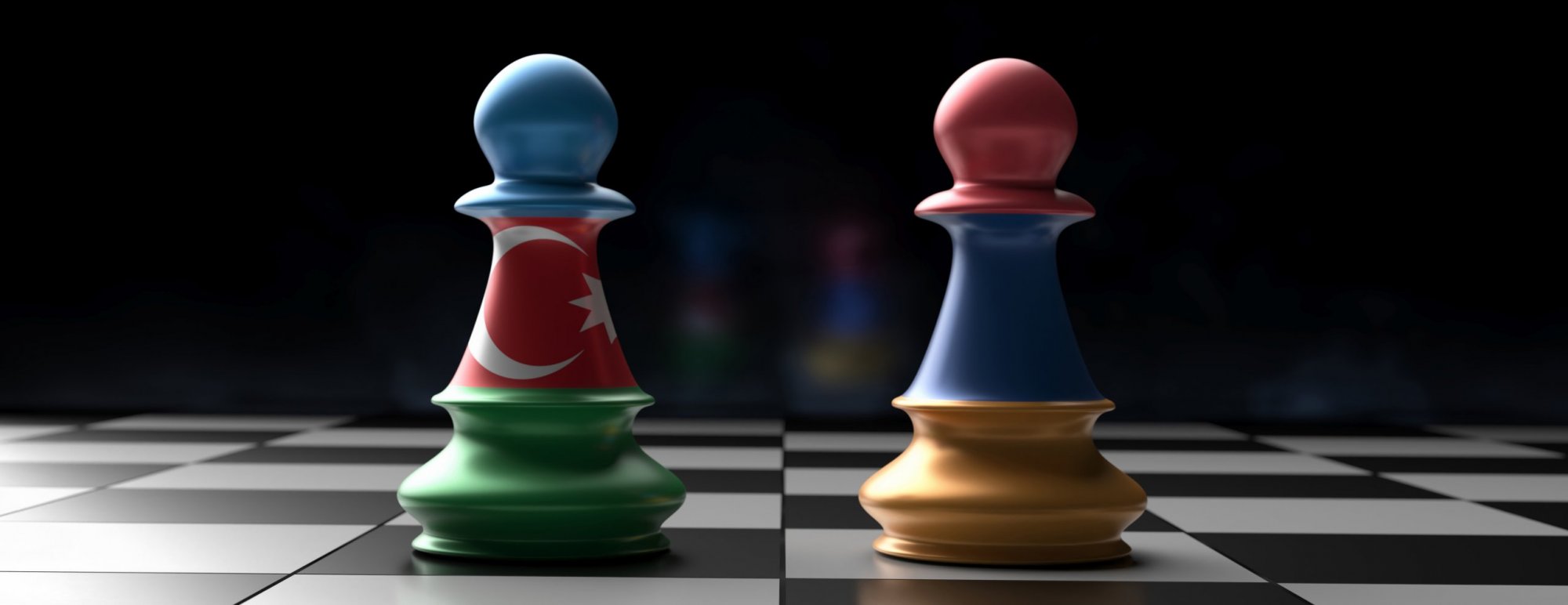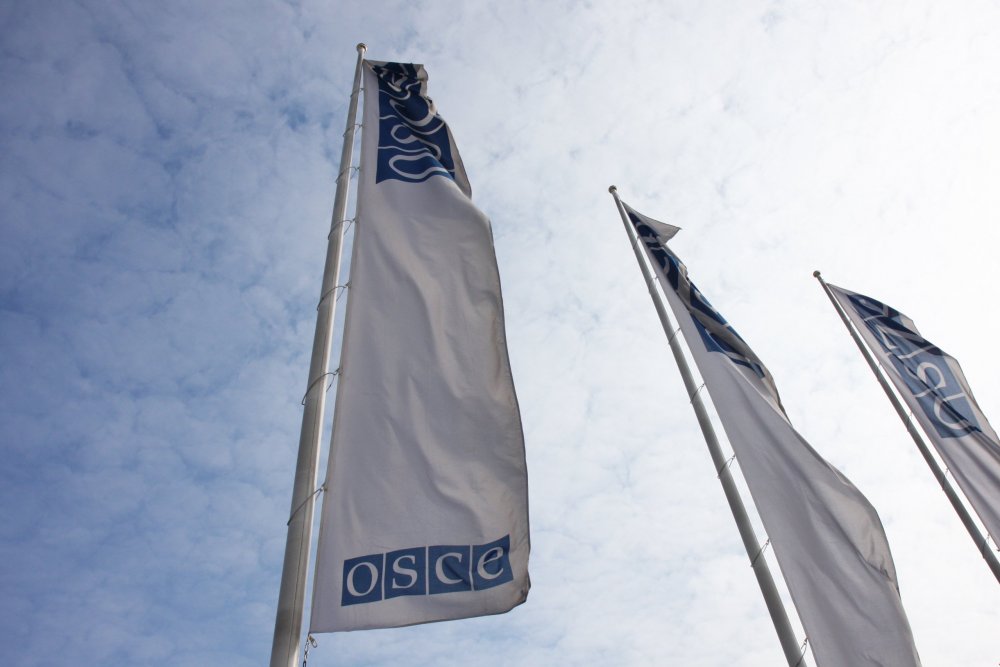rawf8/shutterstock

Nagorno-Karabakh: What Next?
On Sept. 19, while world leaders at the United Nations General Assembly in New York deliberated about international cooperation, rule of law, human rights, and the peaceful resolution of disputes, halfway around the world, in the mountains of the South Caucasus, an Azerbaijani offensive set the stage for the ethnic cleansing of Armenians from their ancestral land of Nagorno-Karabakh.
The 24-hour military offensive was preceded by an Azerbaijani blockade of the Lachin Corridor, which connects Nagorno-Karabakh to Armenia and is vital for the supply of essential goods. Over the course of nine months, the blockade resulted in severe shortages of food, medicine, electricity, and fuel. Azerbaijan repeatedly ignored calls from the international community, including the International Court of Justice, to reopen the corridor and end the siege.
Populated by ethnic Armenians, Nagorno-Karabakh broke away from Soviet Azerbaijan in 1991, shortly before the collapse of the Soviet Union. Following a 1994 ceasefire that ended a bloody war between Armenia and Azerbaijan, the OSCE Minsk Group — co-chaired by France, the Russian Federation, and the United States — hosted talks between the two countries. The disputed territory was self-governed for 30 years but continued to be internationally recognized as part of Azerbaijan.
In 2007, an OSCE mediation effort produced the original set of Basic Principles to end the conflict on the basis of an interim status for Nagorno-Karabakh, providing guarantees for security and self-governance until the drafting of a comprehensive final settlement. The Basic Principles are grounded in the Helsinki Final Act of 1975 — namely, non-use of force, territorial integrity, and equal rights and self-determination of peoples.
Within 10 days of the Sept. 19 Azerbaijani offensive, over 100,000 Armenians fled Nagorno-Karabakh and found refuge in neighboring Armenia. By the time the first U.N. mission in 35 years of violent conflict arrived in Stepanakert, the capital of the enclave, only between 50 and 1,000 ethnic Armenians remained in Nagorno-Karabakh, according to the U.N.
In Yerevan, Armenia’s capital, the shock of losing Nagorno-Karabakh brought angry protesters to Republic Square, who demanded to know the culprits responsible for the debacle.
Fingers pointed first to Armenian Prime Minister Nikol Pashinyan for essentially abandoning Nagorno-Karabakh. Next to blame were Russian President Vladimir Putin as well as Russian peacekeeping forces for standing aside and even tacitly approving Azerbaijan’s offensive. Western institutions and governments, particularly the U.S. and the European Union, were on the blame list as well for failing to deter Azerbaijan’s aggression.
But what can be done now to prevent a further escalation of the conflict while the international community’s attention is diverted to the latest war between Israel and Hamas?
Protection of Refugees
Urgent humanitarian needs in Armenia must be addressed first. The 100,000 refugees there need shelter, food, health care, schooling, and emotional support to preserve a modicum of dignity. They must be designated as “refugees,” and the UNHCR must be invited to provide urgent assistance. Armenia needs international support to care for the refugees, and the international community has a responsibility to provide protection and aid to them.
Additionally, the refugees’ right to return to Nagorno-Karabakh must be preserved. However, the hollow rhetoric and bare minimum terms Azerbaijan has offered for the return of Armenians are insufficient. Concrete measures must be established for Armenians to enjoy meaningful autonomy and minority rights under international monitoring and protection. Moreover, it is incumbent upon the international community to ensure that the homes and belongings these refugees abandoned are not destroyed, confiscated, looted, or otherwise damaged.
The 50 to 1,000 Armenians left in Nagorno-Karabakh — most of them elderly, sick, or injured, according to the U.N. mission — must be provided protection by the deployment of international eyes and ears, human rights monitors, and reporters. These monitors must be allowed to visit remote areas of the enclave where rumors of massacres and mass graves have emerged, before the evidence is destroyed.
Beyond the urgent humanitarian needs, Armenia also needs massive international economic assistance. Otherwise, the country risks succumbing to internal turmoil.
Political Prisoners and Prisoners of War (POWs)
According to Azerbaijan’s prosecutor general, 300 former authority leaders of Nagorno-Karabakh are wanted for alleged war crimes committed during the three wars unleashed on the enclave. Already, some have been detained, humiliated in front of cameras, and transferred to Baku prisons.
These leaders must be freed immediately, at the very least as a confidence-building measure. The international community — in particular the U.S. and the EU as mediators, as well as the OSCE Minsk Group Co-Chair countries — has an obligation to persuade Azerbaijan to free them unconditionally. Additionally, during the September assault, Azerbaijan detained several Armenian prisoners of war, who joined the unknown number of POWs that have remained in Azerbaijani custody since the 2020 war. Now that the war is over, the POWs must be freed immediately in accordance with the Geneva Conventions.
Robust Border Monitoring
A robust monitoring mission, larger than the current EU mission, must be deployed urgently along the entire border of Armenia and Azerbaijan to prevent further aggression from the latter. The 25-year OSCE experience with mediation between Armenia and Azerbaijan could help complement the EU monitoring mission. In this context, it would be important for the OSCE to adopt a budget and decide by consensus to assume a role here.
The mission must ideally have security enforcement powers. The alternative to monitors with enforcement powers is arming Armenia with defensive weapons to remedy the asymmetry of forces and prepare for a potential Azerbaijani offensive in southern Armenia. Currently, Armenia cannot stand against the vastly superior armed forces of Azerbaijan, which has received supplies from Russia, Belarus, Turkey, and Israel.
Need for Impartial Mediation
The U.S. and the EU have expressed regret and disappointment for the failure to restrain Azerbaijan. It is too late for such regrets in Nagorno-Karabakh. However, time is of the essence for political support to Armenia.
For the past year, the U.S. and the EU have mediated peace talks between Armenia and Azerbaijan. Following the ethnic cleansing of Nagorno-Karabakh, two priority points of contention remain between the two countries: (1) delineating Armenia’s borders with Azerbaijan before the latter uses force again to pursue irredentist claims on sovereign Armenian territories, and (2) blocking Azerbaijani demands, supported by Turkey, to connect eastern Azerbaijan with its landlocked Nakhichevan exclave — an autonomous republic that is part of Azerbaijan but not connected to the mainland — via a “corridor” through the Syunik region in southern Armenian.
Azerbaijan bases its demand on Article 9 of the agreement that ended the 2020 war in Nagorno-Karabakh. However, that agreement is null and void following Azerbaijan’s resumption of war on Sept. 19. Any such passage through sovereign Armenian territory must be subject to negotiations and mutually beneficial agreement.
Since 2022, U.S. and EU mediators have supported Azerbaijan’s interpretation of international norms regarding Nagorno-Karabakh’s status, disregarding the evolution of relevant laws in recent cases for Kosovo and East Timor that argued in favor of self-determination when minority rights are breached. This happened largely due to growing Western dependence on Azerbaijan for gas supplies.
Moreover, because of these hydrocarbon interests and the West’s failure to impose consequences, including economic sanctions, for repeated Azerbaijani infringements against Armenia and Nagorno-Karabakh, Azerbaijan’s hereditary President Ilham Aliyev has felt empowered to use aggression, signaling that power counts more than international norms. To do no further harm, future Western mediation between Armenia and Azerbaijan cannot continue the same favoritism.
Beyond the U.S. and EU mediation, Russia has also convened summits between Armenia and Azerbaijan, which are ongoing in various formats. Considering Russia’s tacit acquiescence with the Azerbaijani aggression, Armenia is a reluctant participant in these meetings. The U.S. and the EU must mitigate in deeds and not just rhetoric the risks inherent in this rival mediation process.
Beyond the immediate mediation needs, reaching an end of conflict and sustainable peace between Armenia and Azerbaijan requires measures to address a legacy of conflict and abuse that have caused deep wounds in both countries.
*Hrair Balian has practiced conflict resolution for the past 35 years in the Middle East, Africa, the Balkans, Eastern Europe, the Caucasus, and Central Asia. He has served in leadership positions with the U.N., OSCE, and NGOs, including the Carter Center (Director, Conflict Resolution, 2008-2022). He has taught conflict resolution, negotiation, and mediation at Emory University’s School of Law (2008-2018) and Georgia Institute of Technology’s Sam Nunn School of International Affairs (2023).



Comments
* Your email address will not be published